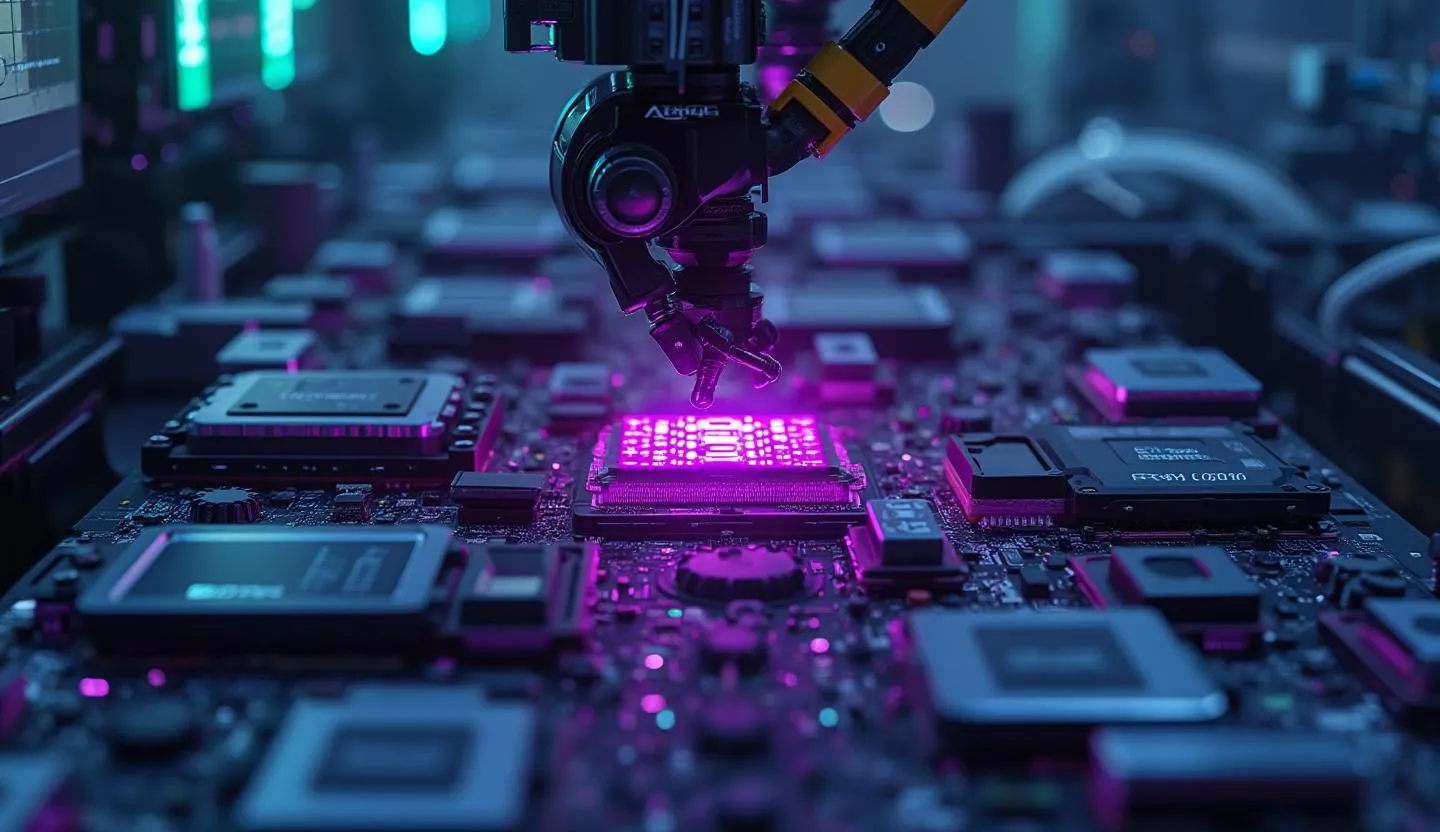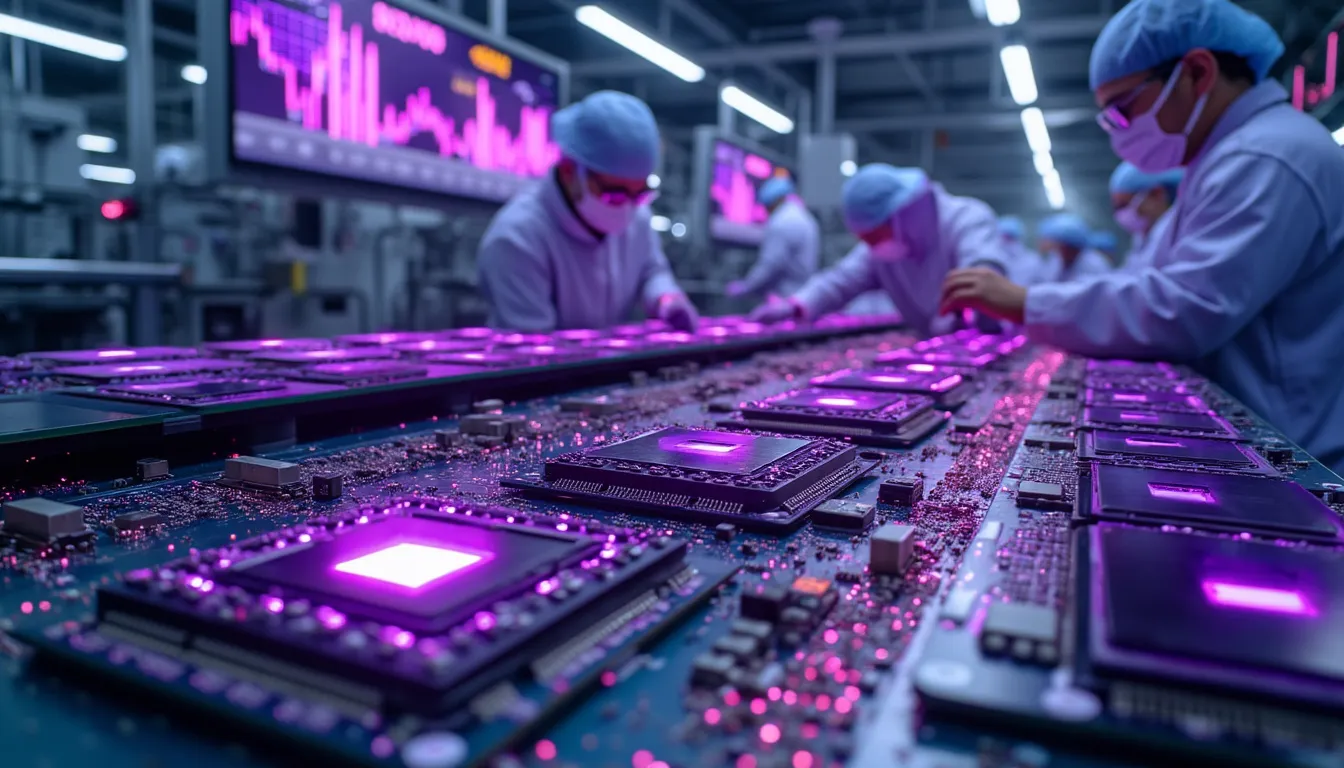Sector Rotation or Sector Risk? Micron’s Slide Signals Shifting Sentiment in Tech
When the semiconductor sector sneezes, the entire technology market often catches a cold. Today, all eyes are on Micron Technology, Inc. (MU), a leading player in memory and storage solutions, as it stands out among the day’s notable laggards. Despite previous bullish sentiment around AI infrastructure, Micron’s sharp decline has raised questions about the durability of the chip rally and where investor conviction truly lies.
Micron, a critical supplier of DRAM and NAND memory chips to the world’s largest device and data center manufacturers, has often been seen as a bellwether for the broader health of the semiconductor and AI-driven economy. Its fortunes are inextricably linked to both cyclical and secular trends—ranging from hyperscaler data center spending to consumer electronics demand. Yet, even with AI tailwinds, Micron’s latest performance suggests not all chips are created equal in this market upswing.
Key Takeaways
Micron is down -3.28% intraday, trading at $115.95 (volume: 23.1M), sharply underperforming the sector and broader market.
Recent news highlights both the sector’s AI-driven optimism and Micron-specific headwinds.
Analysts previously called Micron a top AI winner, but short-term volatility now clouds that narrative.
Earnings growth was projected to accelerate, but recent price action hints at profit-taking or sector rotation.
Micron’s Place in the Memory Supply Chain
Micron’s business model is unique among semiconductor giants: Unlike Nvidia (which designs GPUs), Micron manufactures DRAM and NAND flash memory, which are essential for everything from servers and smartphones to autonomous vehicles. As the sole U.S.-based memory manufacturer of scale, Micron’s results are often viewed as a proxy for global demand in high-performance computing, cloud, and AI infrastructure.
Why the Sharp Drop?
Today’s session saw Micron sharply underperform its peers, registering a -3.28% decline with heavy volume (23.1M shares traded by late session). This is a notable reversal, especially given the broader S&P 500’s resilience and technology’s recent leadership.
The move comes just days after bullish headlines such as Zacks Investment Research’s “Is Nvidia Topping Out? Why Micron Might Be the Next AI Winner,” which argued that, as GPU supply constraints ease, memory and storage demand should accelerate. However, as The Motley Fool reports, “Shares of computer semiconductor memory maker Micron (MU -4.24%) tumbled 4.3% through 11:45 a.m. ET Monday.”
Performance Review: Momentum Broken?
Trading and Volume Analysis
Current Price: $115.95 (down from previous close of $120.11)
Price Change: -$4.16 (-3.28%)
Volume: 23,187,147 (well above average)
52-Week Range: [Implied from context, not provided]
The heavy volume accompanying today’s drop may signal institutional selling or a recalibration of expectations following a multi-week rally. The recent uptrend had been fueled by robust demand for AI training infrastructure—a narrative Micron had ridden alongside peers Nvidia and AMD.
But as high-profile analysts have begun to question whether AI hardware stocks are topping out, Micron’s sensitivity to capital spending cycles and inventory corrections has come back into focus.
Analyst Sentiment and Price Target Revisions
Recent weeks have seen a flurry of analyst commentary on Micron’s prospects. While price targets were ratcheted higher throughout the spring, the latest earnings cycle brought more nuanced takes:
Investors Business Daily recently included Micron in a list of “7 Stocks’ Earnings Growth Is About To Go Gangbusters,” reflecting ongoing faith in the company’s leverage to AI and data center buildouts.
However, some analysts have warned that the easy gains may be behind us, pointing to “inventory normalization” and cyclical risks as the next hurdles.
“Earnings season is upon us again. And analysts think they know where the greatest growth in the S&P 500 will come from.” — Investors Business Daily
Yet, the market’s reaction today suggests that even anticipated earnings acceleration may not be enough to offset near-term volatility and sector rotation out of crowded trades.
Market Context: AI Hype vs. Macro Headwinds
Recent News Roundup
Zacks Investment Research: “Nvidia just hit a staggering $4 trillion market cap, cementing its position as the most dominant force in the AI hardware space. It’s an incredible milestone that reflects the company’s overwhelming leadership in GPUs, data center infrastructure, and the broader AI compute stack.”
The Motley Fool: “Shares of computer semiconductor memory maker Micron tumbled 4.3% through 11:45 a.m. ET Monday.”
Investors Business Daily: “Earnings season is upon us again. And analysts think they know where the greatest growth in the S&P 500 will come from.”
While Micron is often touted as a top AI beneficiary, the reality is more nuanced. Memory pricing remains cyclical, and any sign of softening demand or oversupply can quickly unwind recent gains. Moreover, with Nvidia’s valuation reaching historical heights, investors may be rotating into less-crowded trades—or simply taking profits across the semiconductor complex.
Sector Rotation or Early Warning?
The broader technology sector remains in favor, but the sharp divergence in Micron’s price action versus the S&P 500 ETF (SPY) and other semiconductor peers cannot be ignored. Some of this may be technical—a reaction to overbought conditions—while some may reflect genuine concern over the next phase of the memory cycle.
What’s Next? Risk and Opportunity in Memory Stocks
Micron’s high sensitivity to both global supply chains and capex cycles means its stock will likely remain volatile in the near term. Today’s selloff is a reminder that even AI darlings are not immune to profit-taking, sector rotation, or macro headwinds.
Risk Management for Investors
Monitor upcoming earnings for confirmation of growth trends.
Watch for signs of inventory build-up or pricing pressure in DRAM/NAND markets.
Be mindful of sector ETF flows and rotation into value or defensive plays.
Conclusion: Micron’s Move—Caution or Opportunity?
Today’s sharp reversal in Micron Technology, Inc. underscores the complexity of investing in semiconductor leaders during an AI-driven bull market. While long-term fundamentals remain sound, short-term volatility is likely to persist as investors weigh the sustainability of AI infrastructure spending, memory pricing, and broader macroeconomic risks.
The message is clear: Stay nimble, keep a close eye on sector positioning, and don’t let bullish narratives blind you to the risks inherent in cyclical tech plays—even those with the strongest AI tailwinds.

.svg)
.svg)
.svg)
.svg)

.svg)

.svg)
















